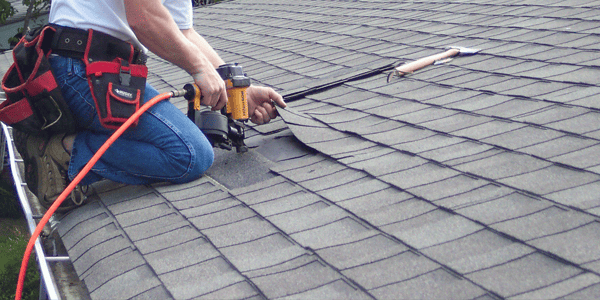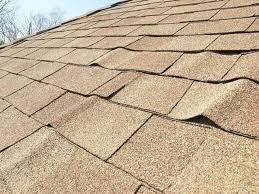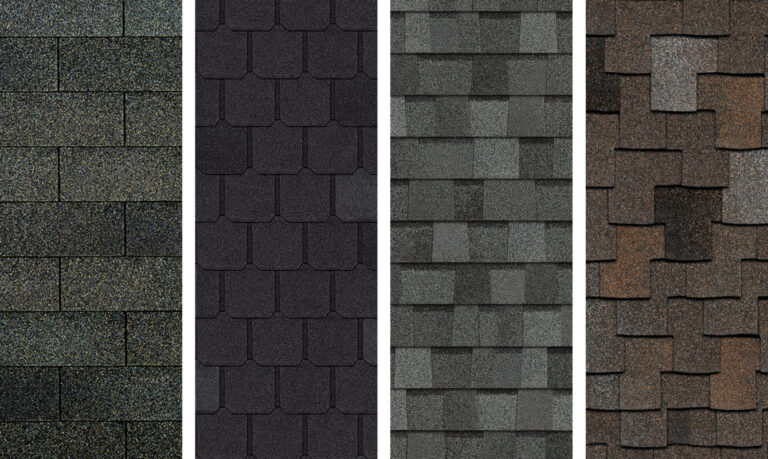Your roof is designed to withstand the elements for a very long time. However, severe weather events that involve high wind speeds can interfere with your roof’s integrity, cutting your roof’s lifespan down drastically.
Interestingly enough, wind damage is one of the primary reasons why homeowners file insurance claims. Unfortunately, it can be difficult to determine whether or not wind damage has occurred — especially if you don’t know what to look for.
Below we’ll cover everything you need to know when it comes to roof wind damage.
Roof Wind Damage: What it Looks Like
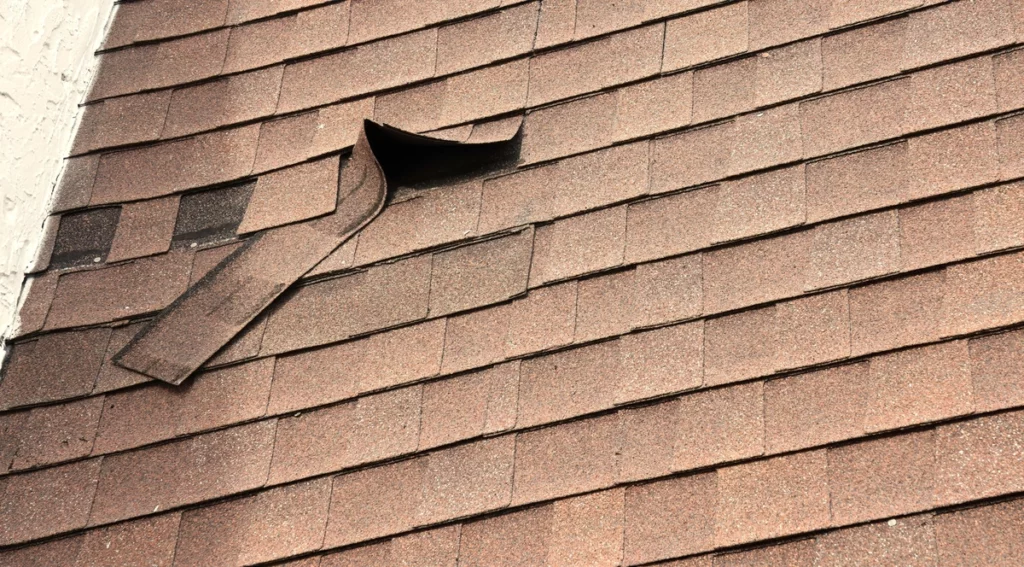
Wind can damage your roof in a variety of ways that aren’t exactly universal. Certain areas of the roof can be more vulnerable to high wind speeds, whereas others are more vulnerable to high wind pressures. If you have any roofing material that’s even the slightest bit loose, wind can get below it and thrust it upwards, paving an advantageous path for more wind damage to occur.
Here’s an overview of important wind damage facts that all homeowners should know:
- The corners and perimeter of the roof are the most susceptible to high wind pressures and speeds
- The center of the roof is arguably the strongest area — structurally speaking —when it comes to high and heavy winds
- High winds are also often responsible for moving large debris across the roof’s surface. This includes large tree branches and shards of glass, both of which can be more damaging than the wind itself
Wind damage also presents itself as:
- Loose, peeling, missing, or curling shingles
- Piled up debris
- Exposed insulation (which can lead to water damage and leaks if there’s rain)
- Damaged soffits
- Damaged fascia
- Shingle granule loss
- Chimney issues
Lastly, you may be wondering just how fast wind has to travel to be a potential risk for your roof. Generally speaking, winds traveling between 70 and 90 miles per hour (mph) are the starting point for wind gusts that can wreak havoc on your roof. However, gusts of only 50 mph can give your roof a run for its money — especially if your roof is already weak from aging or previous damage.
How to Spot Roof Wind Damage
After any big storm, it’s essential to do a roof check. If there’s damage, you can mediate it as soon as possible, and if there’s no damage, then you can rest easy. More importantly, here’s how to check for roof damage by strong winds:
- Do an outdoor inspection. Starting with the outside perimeter of your home, you’ll want to look around and investigate the ground, your siding, and of course, your roof. Look for missing shingles (on the roof and the ground), and look for damage to your chimney, ventilation pipes, roof flashing, and gutter systems.
- Do an indoor inspection. Roof damage on the outside of your home will be more specific to the type of weather event that has just passed. Roof damage on the inside of your home, however, will present itself rather universally. Therefore, you’ll want to check for water stains (they’ll be yellow, brown, or grayish), peeling paint, or obvious leaks on walls and ceilings.
- Pay attention to your energy bill. Another lesser sign of wind damage — that’s actually a big deal — is a sudden spike in your energy bill. This can be said for other types of roof damage as well, but if your ventilation system is compromised due to heavy winds, it’ll hit you in both your HVAC system and wallet.
Wind damage can also present itself in the form of lifted shingles or creased shingles. Lifted and creased shingles post-storm can also be a sign of a poorly installed roofing system. However, you would need to be on your roof to really notice — which is not recommended.
Therefore, even if you only suspect damage to your roof, you’ll want to get in touch with a professional roofing contractor for an official inspection.
What to Do When Your Roof Has Wind Damage
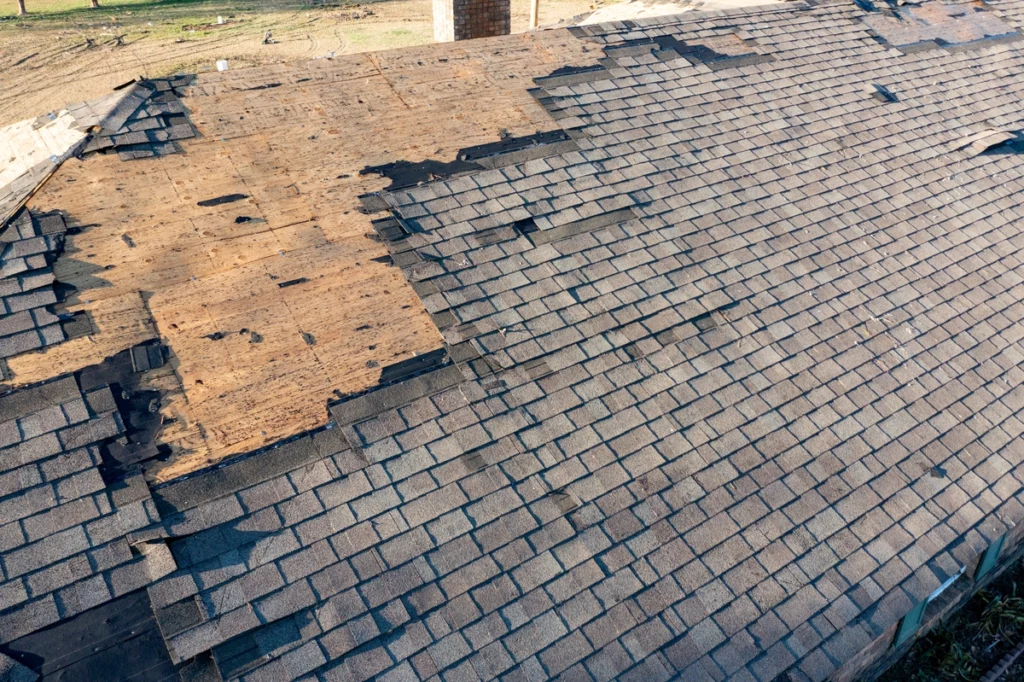
Once you’ve spotted wind damage, there’s no going back. You’ll need to remedy the situation via roof repairs or replacement as soon as possible to prevent further damage from occurring to your roof and home’s structure.
There are three primary steps to take when you have wind roof damage:
1) Get in Touch with your Homeowners Insurance Company.
Whenever you have storm roof damage, which includes wind damage, you need to get in touch with an insurance agent and review your policy together to determine what type of payout you can expect and when. Your policy will either have an Actual Cash Value (ACV) policy or a Replacement Cost Value (RCV) policy, and each type covers a different value and the payout comes at different times. You’ll also need to get your hands on the correct claim to fill out and file and get any other questions you have answered in order to proceed.
2) Find a Reliable Roofing Contractor
Next, you’ll need to find a roofing company with storm damage experience and schedule an inspection immediately. Most trustworthy companies offer free inspections as well as emergency storm services and insurance claim assistance — which is a plus. More importantly, they’ll provide you with a detailed report regarding the damage that you can attach to your insurance claim upon filing. They’ll also provide you with a written estimate for the project, which you can hold onto if you decide to hire them.
3) Get Ready for the Insurance Adjuster
Once you’ve filed your claim, your insurance company will send out an adjuster to evaluate the damages based on that claim. Once you have the date scheduled with the adjuster, you’ll want to notify your roofing contractor and have them come and meet with the adjuster to ensure no mistakes are made for the best possible outcome. After all, the insurance adjuster is the only person with the power to deny or approve your claim.
Work With The Top Roofing Contractor!
Roof issues caused by damaging winds can be incredibly stressful. The professional roofing team at Tidds Roofing is here to take the stress out of wind damage. Give us a call today if you suspect roof damage due to winds or other weather events, and don’t forget to ask about our military and veteran discounts!
